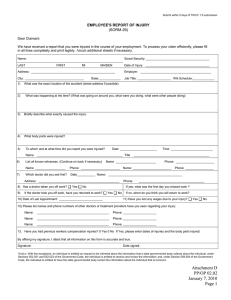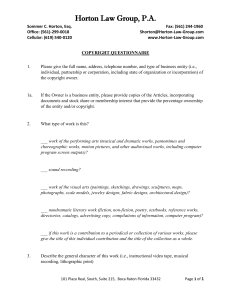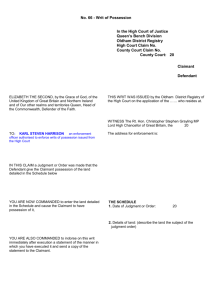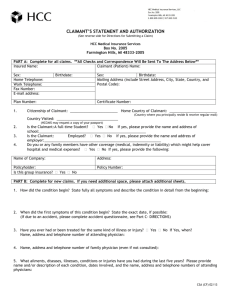BREACH OF DUTY : Case Notes
advertisement
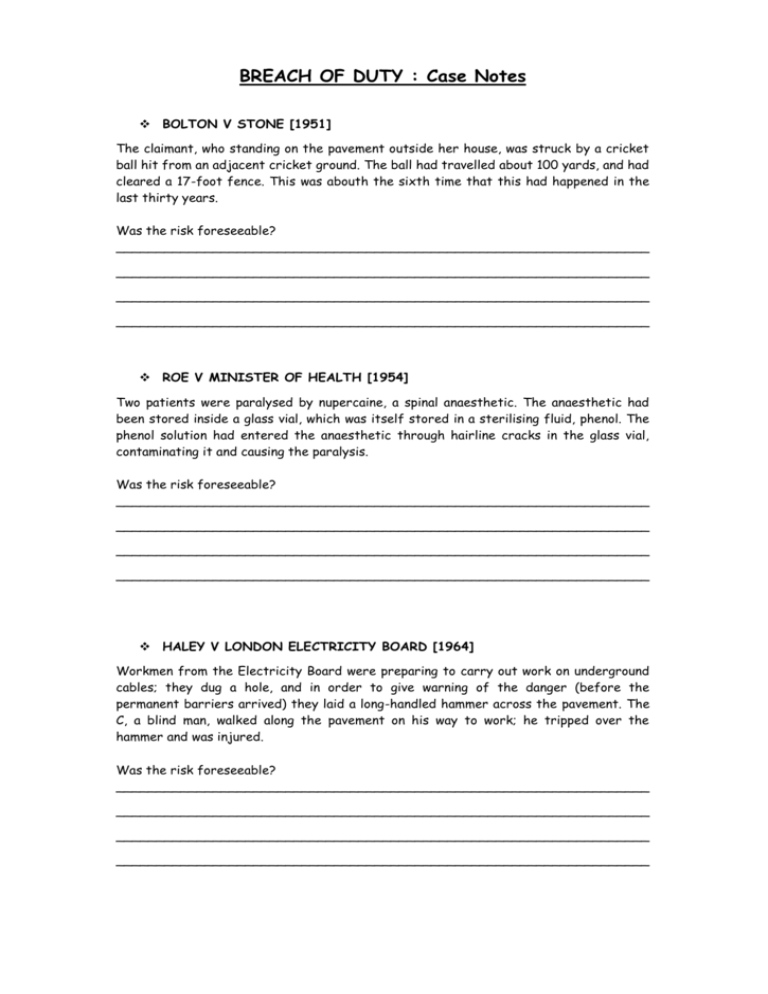
BREACH OF DUTY : Case Notes BOLTON V STONE [1951] The claimant, who standing on the pavement outside her house, was struck by a cricket ball hit from an adjacent cricket ground. The ball had travelled about 100 yards, and had cleared a 17-foot fence. This was abouth the sixth time that this had happened in the last thirty years. Was the risk foreseeable? __________________________________________________________________ __________________________________________________________________ __________________________________________________________________ __________________________________________________________________ ROE V MINISTER OF HEALTH [1954] Two patients were paralysed by nupercaine, a spinal anaesthetic. The anaesthetic had been stored inside a glass vial, which was itself stored in a sterilising fluid, phenol. The phenol solution had entered the anaesthetic through hairline cracks in the glass vial, contaminating it and causing the paralysis. Was the risk foreseeable? __________________________________________________________________ __________________________________________________________________ __________________________________________________________________ __________________________________________________________________ HALEY V LONDON ELECTRICITY BOARD [1964] Workmen from the Electricity Board were preparing to carry out work on underground cables; they dug a hole, and in order to give warning of the danger (before the permanent barriers arrived) they laid a long-handled hammer across the pavement. The C, a blind man, walked along the pavement on his way to work; he tripped over the hammer and was injured. Was the risk foreseeable? __________________________________________________________________ __________________________________________________________________ __________________________________________________________________ __________________________________________________________________ PARIS v STEPNEY BOROUGH COUNCIL (1951) The claimant, Mr Paris, was blind in one eye. His employer, Stepney BC asked him to do a job that involved a very small risk to his other eye and provided no protective eyewear. However, Mr Paris was blinded in his one working eye, and the accident therefore left him completely blind. Would the severity of the possible outcome affect the degree of care that must be taken to avoid it? __________________________________________________________________ __________________________________________________________________ __________________________________________________________________ __________________________________________________________________ WATT v HERTFORDSHIRE C.C (1954) A fire brigade was notified of a serious road accident: a person was trapped and heavy lifting equipment was urgently required. The lorry which usually carried the equipment was engaged in other work at the time, and the fire officer ordered the equipment be loaded into the back of an ordinary lorry. On the way to the incident, the equipment slipped and a fireman was injured. He sued his employers. Should his claim succeed? __________________________________________________________________ __________________________________________________________________ __________________________________________________________________ __________________________________________________________________ MARSHALL v OSMOND (1982) The claimant was involved in stealing a car and was a passenger in the vehicle at the time of arrest. A high-speed car chase occurred, during which the claimant was injured. Have the police breached their duty of care to the claimant (the passenger in the fleeing vehicle)? __________________________________________________________________ __________________________________________________________________ __________________________________________________________________ __________________________________________________________________ LATIMER V AEC Ltd (1952) A factory became flooded after a torrential rainstorm. The water mixed with oil and grease creating a slippery surface. The defendant attempted to minimise the risk by putting sawdust down but there was not enough to cover the whole floor. The claimant, Latimer, slipped on the floor and was injured. Had the defendant taken sufficient precautions? Had the duty of care been breached? __________________________________________________________________ __________________________________________________________________ __________________________________________________________________ __________________________________________________________________ HILDER V ASSOCIATED PORTLAND CEMENT [1961] ‘D’ were the owners of waste ground, and they allowed children to play football on that ground. At one end, there was a three-foot wall behind the "goal", and balls were commonly kicked into the road. One such ball struck a passing motor-cyclist, causing him to crash and be killed. The motor-cyclist's family sued. Should the defendants be found liable? Had they taken sufficient precautions? __________________________________________________________________ __________________________________________________________________ __________________________________________________________________ __________________________________________________________________ MILLER V JACKON (1977) A cricket ball travelled out of the grounds of a cricket club about 8 or 9 times every season. On one occasion a person was injured. Would the claim be likely to succeed? Why? How does this case compare to Bolton v Stone. __________________________________________________________________ __________________________________________________________________ __________________________________________________________________ __________________________________________________________________
